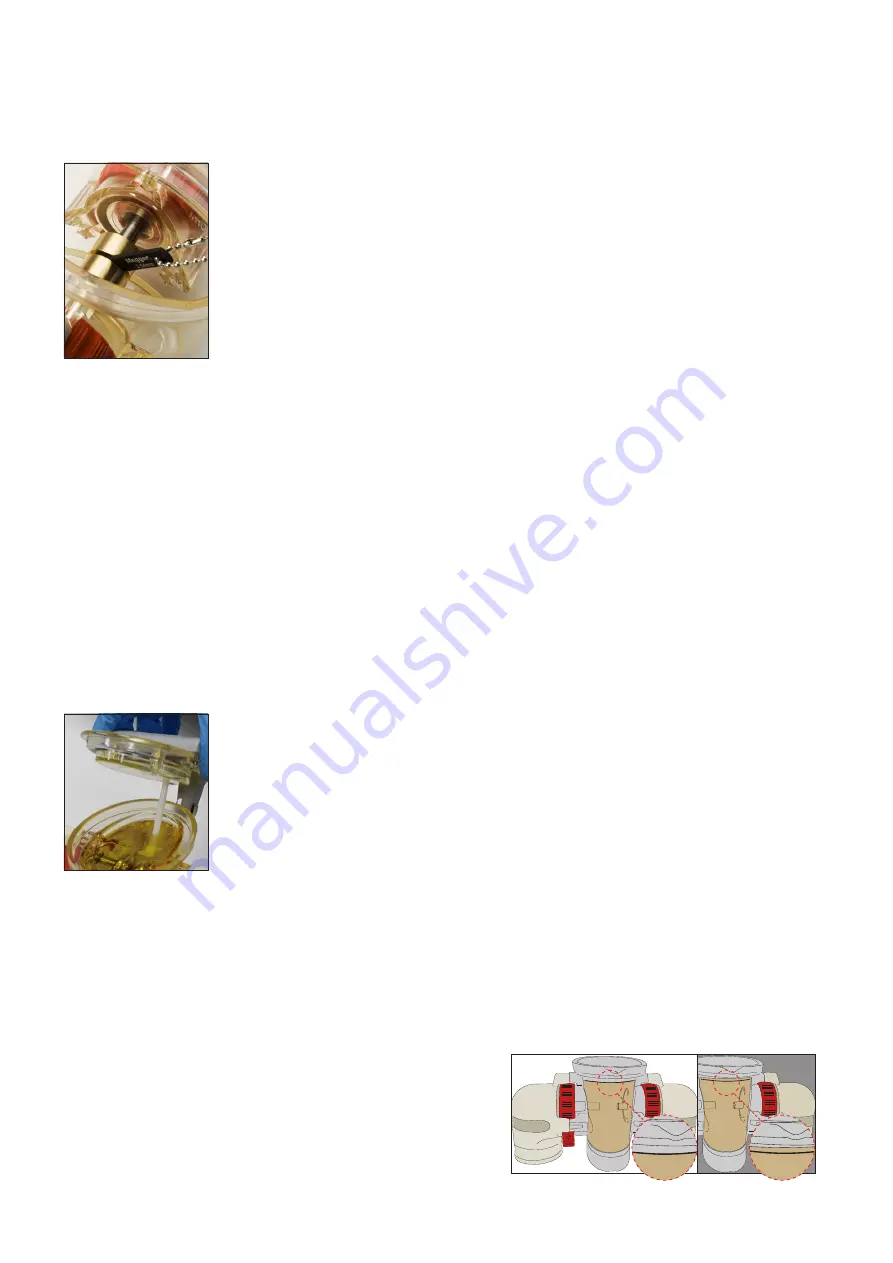
11
moisture, causing breakdown values to be dramatically reduced.
Touching the electrodes or the inside of the vessel should be avoided and during cleaning, the electrodes should be
checked for pitting or scratches that may cause breakdown voltage values to be decreased. Remember that the rules of
cleaning apply to all parts that will come in contact with the oil sample during testing.
2. Setting the electrode gap
Setting the electrode gap accurately is very important; the results obtained are only valid if the
gap is correct. A big problem is movement of the electrodes after the gap has been set and for
this reason, many users of oil test sets check the electrode gap frequently – sometimes before
every test. A better solution is to use test sets where the electrodes can be locked in position,
such as the instruments in Megger’s latest OTS range.
Megger recommends the use of flat, smooth gap gauges. The latest Megger gauges have a
black anodized coating, which not only provides a smooth surface but also shows when the
gauge is worn, as the shiny aluminium starts to show through the coating.
3. Rinsing and then immediately filling the test vessel with the insulating fluid sample
Prior to filling the test vessel it is important to rinse the vessel with clean oil or with some of the sample oil about to
be tested. Rinsing should always be performed before each test, even if performing repetitive testing in an oil test
laboratory.
Remember that when rinsing the vessel, equal attention should be given to any magnetic bead, impeller, baffle plate,
lid and to the electrodes, not just the vessel walls. Rinsing should be applied to any surfaces that will come in contact
with the oil sample during testing.
After rinsing the test vessel with the sample oil it is most important to ensure it is immediately filled with the oil sample
to be tested. Any significant delay, (even a few minutes), may result in the oil film on the vessel’s walls absorbing
water from the air; since the walls have a large surface area, this is likely to contaminate the oil sample and reduce the
breakdown voltage once it has been mixed with the sample. Just 30 parts per million, (ppm), of water is sufficient to
halve the breakdown values.
In fact, ASTM D1816 specifies that the test vessel must be filled with the oil sample within just 30 seconds of the
rinsing taking place.
When filling, pour the oil sample into the vessel swiftly but with minimum turbulence so as not
to entrap air.
Allow the sample to stand for a few minutes before testing to allow air bubbles to clear.
However is important not to leave the sample to stand for longer than absolutely necessary
as it may absorb water from the air in the headspace above it, again reducing the breakdown
voltage. As soon as the bubbles have cleared the baffle/lid should then be fitted to exclude air
contact as below.
■
■
Excluding air from circulating oil when using an impeller to stir the insulating fluid sample
If you are using an impeller stirrer that utilises a baffle plate to exclude air from the oil sample, ensure that oil does not
pass over the upper surface of the baffle plate.
It is also important that the oil sample is in full contact with the underside of the baffle plate.
This will prevent moisture being absorbed from the contact of circulating oil with air as intended by the test standard.
■
■
Fill the test vessel slowly and down the side wall as not to
cause splashing that will introduce unwanted air bubbles into
the test sample
■
■
Fill the test vessel to the 400ml fill line, DO NOT OVERFILL
FILL TO 400ml LINE
DO NOT OVERFILL
400ml Fill to Line
400ml Fill to Line
400ml Fill to Line
400ml Fill to Line
✓
✖












































